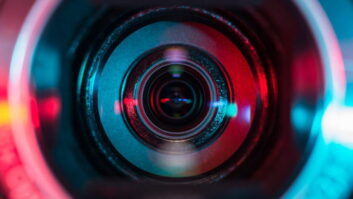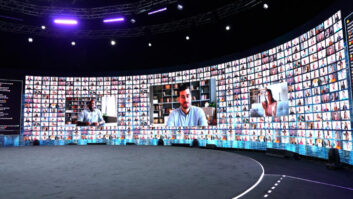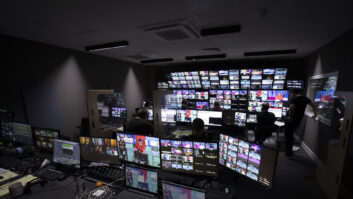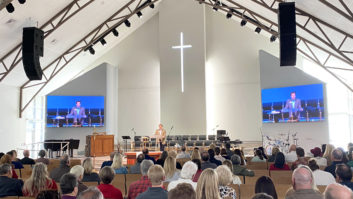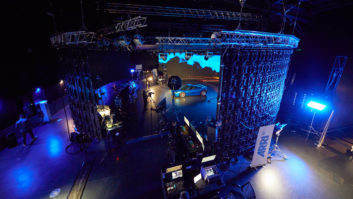 Integrated Systems Europe (ISE) is a key highlight in the pro AV calendar, and the 2023 event proved that the sector is vibrant, energetic and seriously interested in new ideas. As the curator and chair of ISE’s first-ever Content Production and Distribution Summit, alongside my career in professional audio, pro AV and television broadcast, I have had a ringside seat to the convergence of pro AV and broadcast.
Integrated Systems Europe (ISE) is a key highlight in the pro AV calendar, and the 2023 event proved that the sector is vibrant, energetic and seriously interested in new ideas. As the curator and chair of ISE’s first-ever Content Production and Distribution Summit, alongside my career in professional audio, pro AV and television broadcast, I have had a ringside seat to the convergence of pro AV and broadcast.
From mainstream broadcaster or newbie OTT, professional podcaster or lifestyle-influencer, or a brand that is creating content, the goal is the same: create great content, deliver to the right audiences and drive engagement across multiple platforms. As the overlap between pro AV and television broadcast becomes bigger, it has never been easier to tell great stories.
The Summit highlighted technologies at the heart of this convergence, exploring how brands and broadcasters are using virtual studios, augmented reality, streaming and satellite networks, to unleash the power of their stories and enable them to work efficiently, manage professionally and engage personally.
As Tatxo Benet, co-founder of Grup Mediapro stated in his opening keynote, virtual production is the most significant step forward in our industry in a generation. One of Europe’s largest production houses, Mediapro hosted a real-time virtual production studio throughout ISE and has invested heavily in its own virtual production studios, and the latest mixed reality technology.
Pixotope CEO Marcus B. Broderson has a vision of “VP everywhere” in content production, and was perfectly positioned to explain in detail the different types of production within virtual environments from well-known chroma keying, augmented reality (AR), and XR, also known as LED volume production, where the virtual environments are projected on large LED screens, along with data-driven graphics and motion graphics. Virtual production lends itself to distributed teams that can be remotely located – this is the democratisation of content creation.
There are some important real-world challenges in the move to virtual production and Stefan Ukas-Bradley from ARRI, the camera systems and lighting company for motion picture and Stacia Pfeiffer, Lux Machina, a virtual production producer with several IMDB credits to her name, offered valuable insight.
Ukas-Bradley discussed the practical challenges around the choice of camera, lenses and lighting. While LED panels are beneficial, special attention with a mixed lighting setup is needed to achieve real-world colours, e.g., fruit or skin tones.
There are misconceptions surrounding virtual production and in Pfeiffer’s experience, traditional timelines are changing; the post production process is now moving more toward the beginning. The importance of detailed preparation was emphasised especially around workflows and storage. Turning up on set and discovering the workflow changed from 3D to 2D or that storage capacity and transfer speed wasn’t properly considered, when total storage is around 1TB, can be costly even in a virtual set environment.
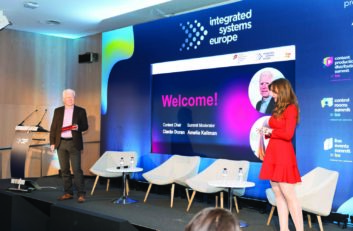 Conference sponsor, The IABM is the independent, international organisation that informs, connects and supports the entire MediaTech ecosystem. With a wealth of data at his fingertips Lorenzo Zanni, IABM’s head of knowledge, presented the latest research on Media Tech convergence, touching on key drivers and the implication for business and technology. Convergence is accelerating across content creation, management, distribution and infrastructure.
Conference sponsor, The IABM is the independent, international organisation that informs, connects and supports the entire MediaTech ecosystem. With a wealth of data at his fingertips Lorenzo Zanni, IABM’s head of knowledge, presented the latest research on Media Tech convergence, touching on key drivers and the implication for business and technology. Convergence is accelerating across content creation, management, distribution and infrastructure.
Keeping viewers and consumers engaged 24/7 regardless of location, opens the door to new technical innovations and business opportunities. Rick Allen (CEO of streaming platform ViewLift) explained how this disruption enables brands to reach their consumers directly using OTT streaming platform, bypassing traditional intermediaries
OTT growth and its advanced analytics opens new territory for advertising. Ads can now be put on top of previously free subscription services. Streaming’s much broader reach allows targeting for specific audience segments and is especially appealing to younger demographics and those who cut the cord (and those who have never had a cord).
Gathering high-quality content from any location on earth is critical for news in traditional broadcasting. Using the Starlink Low Earth Orbit satellite network Francesc Masc, project engineer from CCMA, demonstrated how this enabled TV3 and Radio Catalunya to connect directly with colleagues in Antarctica for live news contributions with low latency and very high quality. There was a real gasp in the audience when Masc made a direct, live connection to introduce his colleagues on Livingstone Island in Antarctica to speak with the audience in Barcelona.
BK Johannessen, Epic Games, and Michael McKenna, Final Pixel, detailed how the Unreal Engine powers many of our virtual production tools and the vital importance of training talent to meet the needs of the industry. In 2022 more than 66,000 customers were trained in the use of these tools – but the demand is continually growing
The conference concluded back in the real world with the public launch of Europe’s latest and largest new media city – Catalunya Media City – by its director Marc Lopez. Also known as The Barcelona Three Chimneys project, the ambition is to create an exciting new home for the digital and audio-visual communities, offering cutting-edge facilities for leading technology innovation and creative industries across southern Europe.
Drawing the Summit to a close, the words of Lorenzo Zanni were most appropriate, “the lines of demarcation between the sectors are blurring, the media ecosystem, which has traditionally been the prevail of broadcast and media entertainment companies, now covers a staggeringly large set of activities competing for consumer’s time and attention.”
The convergence of pro AV and broadcast continues unabated and with standing room only at every session throughout the Summit it was clear that the ISE audience is enthusiastic in learning more about how to create and deliver great content.
This article first appeared in Installation‘s broadcast-facing sister publication TVBEurope.
